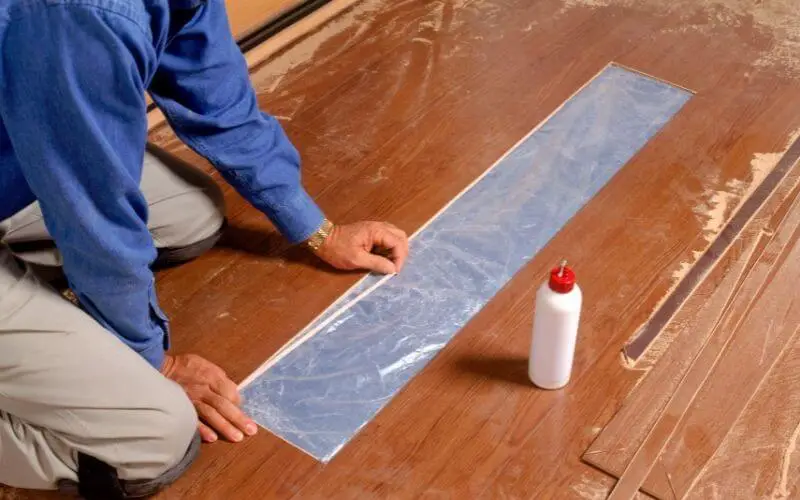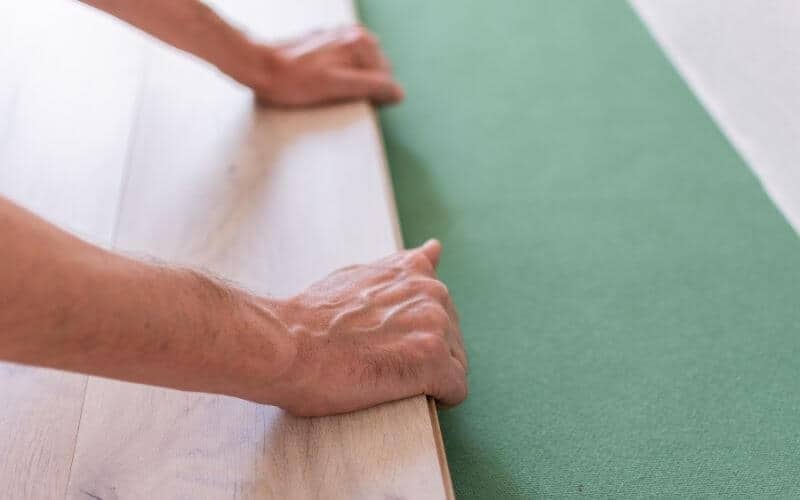Hardwood floors are strong and sturdy and can last a lifetime when treated properly. If your hardwood floor has gone through series of refinishing and renovations, it may not take any more fixes and will need total replacement.
Hardwood, like any other natural product, degrades, and although it can last for centuries, circumstances like incorrect installation, high traffic, poor maintenance, and pets can cause you to replace your hardwood flooring sooner than anticipated.
However, you don’t need to wait until there’s a gigantic hole in the middle of your living room before you replace the flooring; in fact, the big question is: when are hardwood floors beyond repair? Here’s all you need to know.
Read: What is the most durable hardwood floor
When Are Hardwood Floors Beyond Repair
Table of Contents
Water Damage
If your home was flooded as a result of broken pipes, faulty appliances, or any other accident that causes large water spillage, your hardwood floor is bound to experience some water damage.
If the water is allowed to sit on the floor for too long, the hardwood planks are likely to cup. The unfinished underside of the hardwood boards soaks up excess moisture, which causes the edges of each board to bend upwards and the center downwards.
The first step of action if your floor is flooded is to fix the source of flooding. The next step is to dry up the water as fast as possible using a mob, dehumidifier, blower, or fan.
Excessive Mold
Another way to tell if your hardwood floors are beyond repair is excessive molds. Mold thrives in humid conditions so, if there’s accumulated moisture between the sub-flooring and hardwood planks due to prolonged exposure to liquids, it creates the perfect environment for mold development.
A sign of accumulated mold is a musty odor, so if you perceive such smell coming from your hardwood floor there are a few molds on the floor, apply appropriate mold and mildew removal solution to eliminate the mold and use a scrub brush and with a cleaning solution to remove the stains.
Squeaks And Creaks
Squeaks and creaks are another common sign that your hardwood floor is beyond repair. Although this is common in old hardwood flooring, your newly installed floors may start making that annoying sound.
Creaking or squeaking sounds is caused by loose wooden floorboards due to regular expansion and contraction, but this can also occur if the plywood subfloor is not installed properly.
Although you can temporarily silence floor creaks and squeaks by sprinkling powdered graphite or baking soda over the hardwood floorboard, the noises return shortly after.
Gaps Between The Planks
Moisture changes wood naturally, and overtime exposure leads to excessive gapping between the boards and unevenness.
Weather and humidity also cause occasional shrinkage and expansion of the wood planks, leading to the formation of gaps between each of the planks.
If the home’s foundation has issues, it can also cause gaps. Before you begin any repairs, you should first identify the cause of the gapping.
Cracking Or Split Wood
Wood naturally loses the natural barriers that keep it healthy-looking as it ages, so when a hardwood floor is very old, it loses moisture and oil, which results in the cracking or splitting of the wood.
Thankfully depending on how far down the crack is, it can be repaired. You can also replace individual planks with larger cracks instead of replacing the entire floor.
Buckling
Buckling is when planks pull up from the sub-floor and warp but before you go replacing your floor, try to find the cause of the problem, then have it repaired.
An installation problem could cause buckling, and this can be easily fixed by making sure the boards are securely attached to the sub-floor.
Read: How to fix wood floor buckling
Cupped Flooring
Moisture causes different flooring issues like cupping, which is when the edges of a plank rise up, and the center turns down, giving the plank a cup-like shape.
This is usually caused by an imbalance of moisture on the planks. Before you fix this issue, ensure the cause of moisture is fully addressed to avoid future cupping.
Read: How durable is marble flooring
Conclusion
There are different tell signs that your hardwood floors is beyond repair; however, unless it is an extreme case, most of these issues can be resolved without having to replace your entire floor.

